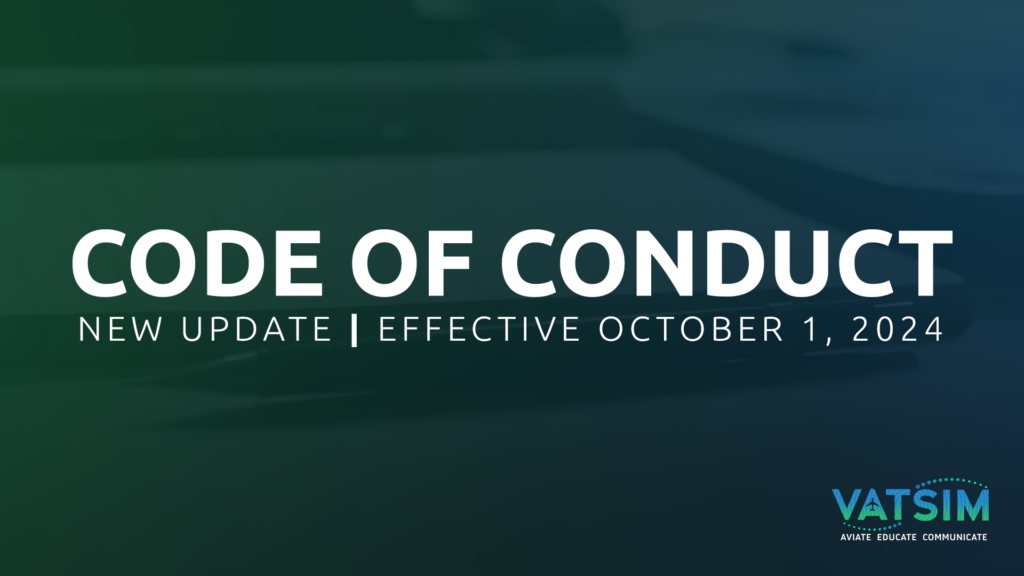
We are pleased to announce that the VATSIM Code of Conduct has been updated. These updates will officially take effect at 0001z on October 1, 2024.
Major updates and changes are listed below:
1. General Rules of Conduct
- Truthful Information (New): Account holders are now explicitly required to provide truthful and unaltered information to VATSIM and staff. Falsification may lead to disciplinary action.
- Guard Frequency (Modified): Instead of prohibiting the use of Guard (121.500 MHz), the new Code permits its use in line with real-world procedures. Pilots and controllers are encouraged to monitor Guard when possible.
2. Pilot Conduct
- Connecting on the ground (Clarified): When a pilot connects on the ground at the same location of another aircraft, the pilot connecting shall deconflict with the aircraft already occupying the location.
- Unattended Connections (Clarified): The section on unattended connections now explicitly allows pilots to step away briefly while under active ATC control, with the controller’s permission. However, the overall 30-minute unattended limit remains.
- Transponder Use (Expanded): Pilots are now encouraged to maintain their assigned squawk code unless instructed otherwise by ATC or if their flight rules change. If no discrete code is assigned, they should use a code appropriate for their flight rules and location
- Unfamiliar Airspace (Expanded): Pilots unfamiliar with an airspace are now explicitly advised to observe operations and study procedures beforehand. This expands on the previous recommendation for reasonable flight preparation.
- IFR Procedures (New): A new requirement mandates that pilots flying under IFR must be capable of following procedures based on current charts and navigational data.
3. Controller Conduct
- Additional Positions (New): The list of recognized ATC position suffixes has been expanded to include Ramp Control (RMP), Radio Operator (RDO), Traffic Management Unit (TMU), and Flow Management Position (FMP).
- Towerview Connections (Modified): The updated Code now allows both controllers and observers to utilize one additional connection for towerview functionality. Previously, this was only explicitly permitted for controllers.
- Controller Visibility Ranges (Modified): The maximum visibility ranges for controllers remain largely unchanged, but specific ranges have been added for the newly introduced RDO, TMU, and FMP positions.
